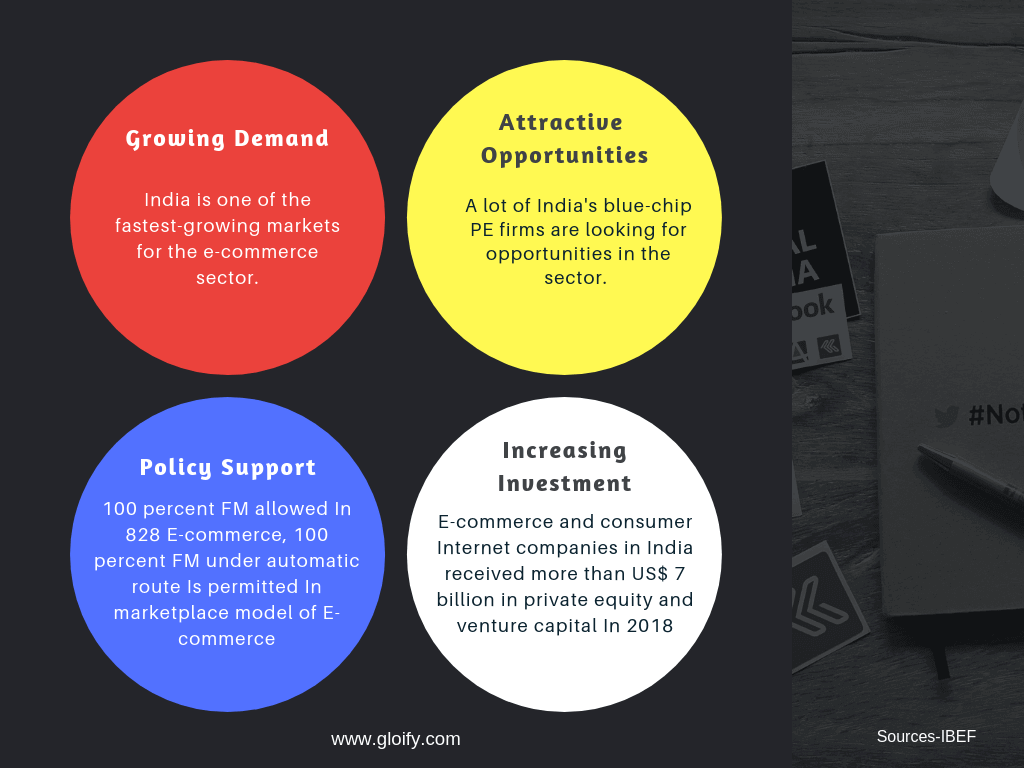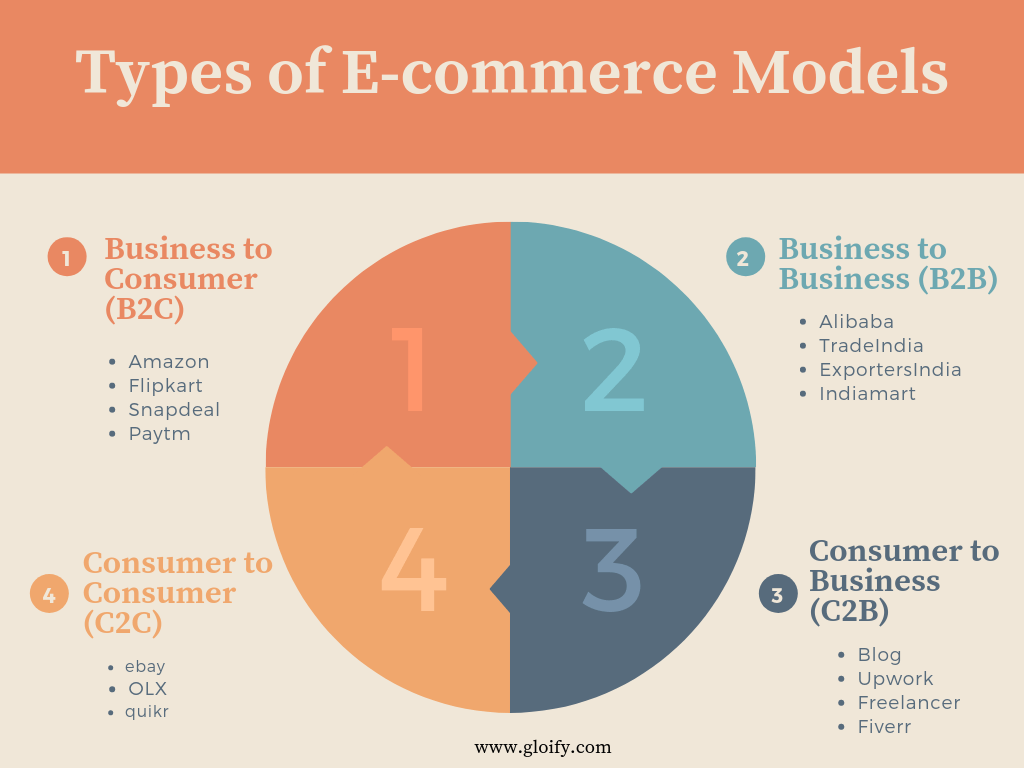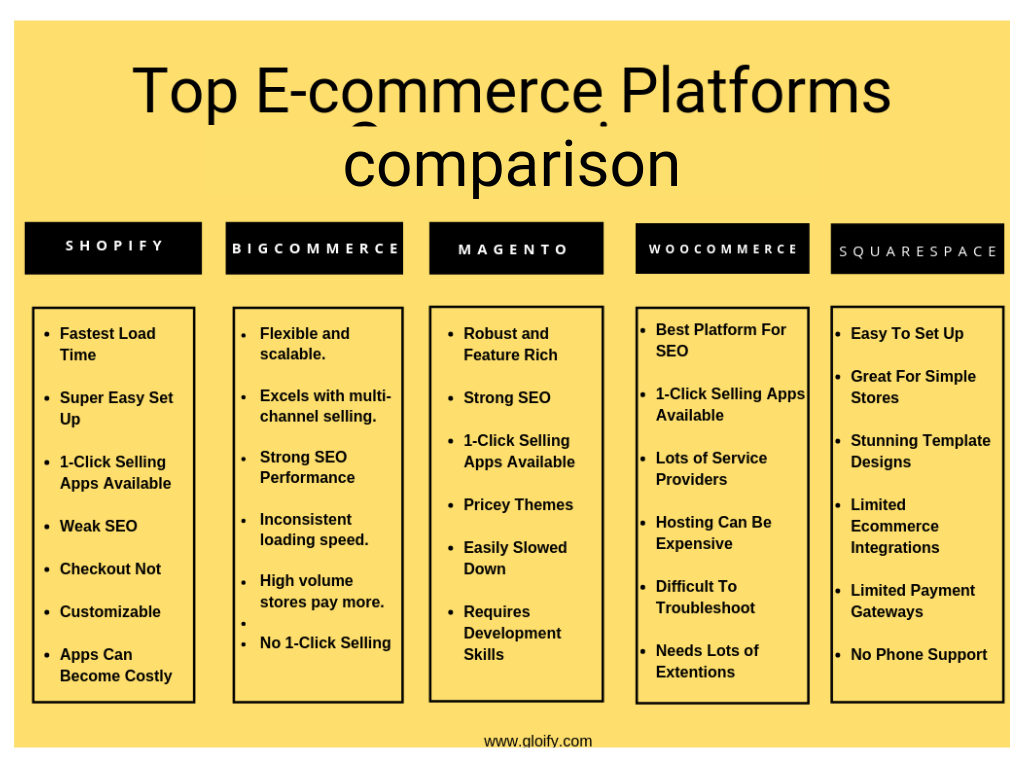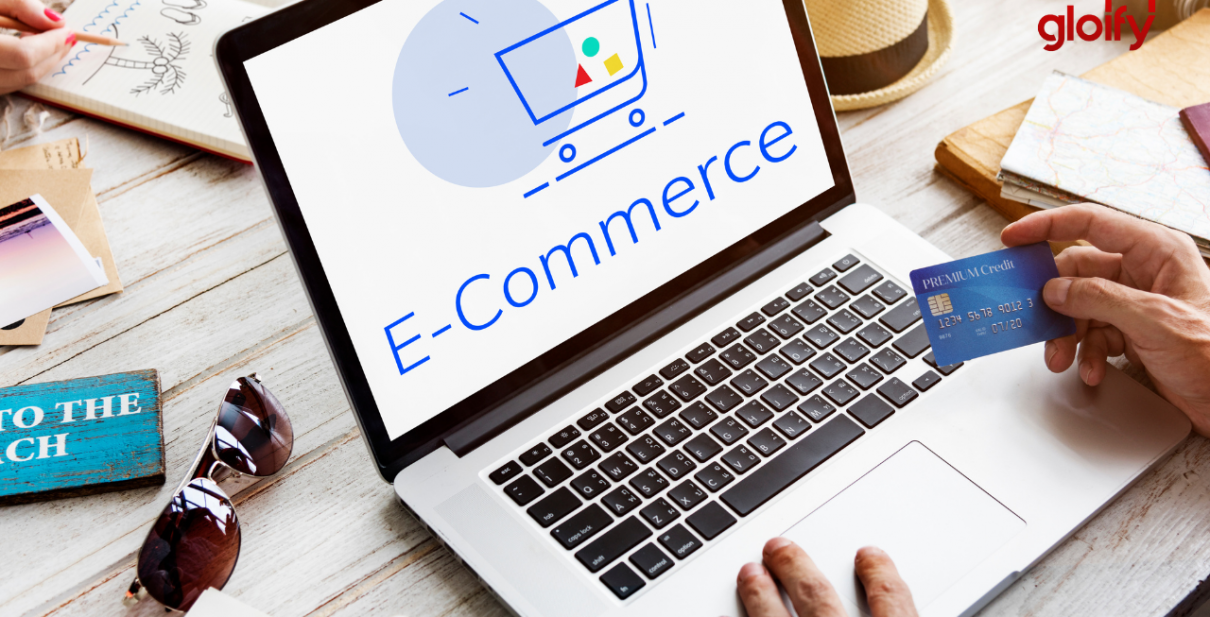Before we start lets understand what is an E-commerce business, and what are the steps to start an E-commerce project in 2021.
What is an E-commerce
Whether you are looking to start an e-commerce business or you are already running e-commerce and looking to explore more about the industry to revamp your business model. This guide will help you get all the essential basics of e-commerce and step to step process to start an e-commerce business in India.
E-commerce also, known as electronic commerce refers to all types of the transaction of goods and services conducted online. If you are ordering a household item from Amazon or buying all of your fashion accessories from Flipkart. Even if you are paying for your Spotify & Netflix subscription every month you’re involved in e-commerce. Whenever someone buys or sells any kind of product or service online, they are engaging in e-commerce.
The e-commerce industry is growing rapidly globally, every business focusing on bringing their product or service online to reach global audiences. Which result you can buy almost anything online at your convenience, and that ease is not available in the traditional shopping. The first e-commerce transaction was done on August 11, 1994, a man sold a CD by the band Sting through his website NetMarket. According to a study people worldwide purchased $2.86 trillion on the web in 2018 and Global retail e-commerce sales are projected to reach $27 trillion by 2020.
Future of e-commerce in India
India has one of the best ecosystems for startups in the world, consistently innovative startups and new products are blooming in the market. And unicorn startup list is growing with new startups which are making their place in the list. India’s e-commerce journey became when two Harvard Business School graduates, Avnish Bajaj, and Suvir Sujan, decided to explore the e-commerce market space in India. They accepted the open door and set up Baazee.com, an online auction service based on the eBay model. Later which was acquired by eBay in a deal valued at $55 million.
This was just beginning, in 2007 two IIT Delhi graduates and former employees of amazon Sachin Bansal and Binny Bansal launched Flipkart as an online bookstore, later on, it expanded into various online categories and became one of the unicorn startup and India’s largest e-commerce marketplace. Walmart acquired Flipkart in 2018 in $16 billion which was the world’s largest-ever e-commerce transaction.
There is a lot happening in India’s startup ecosystem, with a growing number of startups attracting top global investors. Likewise, few of them confronting financing crunches and discovering hard to sustain in this competitive industry. With growing demand and affordability and accessibility of online shopping giving new hopes to the e-commerce industry.
Types of E-commerce Models
- Business to Consumer (B2C)
- Business to Business (B2B)
- Consumer to Consumer (C2C)
- Consumer to Business (C2B)

Business to Consumer (B2C):
Business to consumer or B2C, sales is the traditional retail model where the businesses sell products or services directly to individuals. When anyone orders any product from the marketplace or any e-commerce site and they received the product directly to them and the transaction is based on the B2C model.
Business to Business (B2B):
Business to business (B2B), the model focuses on providing products from one business to other businesses. Many industries are working on this model, software companies are developing applications for other companies, logistics companies are providing services to companies in transporting their goods.
Consumer to Consumer (C2C):
You are moving to another city, items of furniture and other electronic goods which you cannot carry. You auctioned those items on the marketplace, and you found buyers who are ready to purchase on your given price. This sort of exchanges is based on the Consumer to Consumer (C2C) using a marketplace to trade, buy, and sell items in return for a little commission paid to the site.
Consumer to Business (C2B):
Consumer to Business (C2B) is a model where any professional or skilled individuals monetize their skills to make money, in order to provide their skills as a service to different companies. Freelancing is one of the common examples of the consumer to the business model. Where professionals with a diverse skillset in different domain and industry, auction their services on marketplaces such as freelancer, Fiverr, and UpWork.

Where to sell your products?
Selling your products online has many benefits, reaching to a wider audience, who may turn into your customers, no requirement for setting up a physical store. It’s quite simpler to listing your products on the marketplace than building a custom e-commerce store. With regards to selling your item online two choices open for you, either list your product on marketplaces website or develop your own custom e-commerce website. We’ll describe the advantages and disadvantages of both so you can settle on a better choice to begin your e-commerce business.
1-Marketplace
The marketplace websites are the third-party platform, and a ready to sell store where you can list your item, begin getting buyers for your products. Isn’t it sound too simple yes, there are always pros and cons of everything. Listing your product on the marketplace won’t get you, buyers instantly, you need to rival others merchant. Who are selling similar items might be at minimal cost than yours. You need to understand the marketplace algorithms, which can enable you to rank your item on the top, getting users reviews which build trust for other buyers as well. And many other factors which impact your product ranking.
2-Own E-commerce Platform
Building your own custom e-commerce can give you a great return in the long run, yet it requires a great deal of hard work. You need to hire a team to develop your website, a marketing team to help you with marketing, promotions, and SEO. Setting up your own e-commerce platform is time-consuming, but it offers you a chance to build up your brand image, create a customer base, and gathered users data. On the other side, these are not possible while selling your product on the e-commerce platforms.
Choosing the right marketplace for your products?
Once your product is ready to go in the market, you need to analyze your product and its potential buyers before listing it on the marketplace. The top marketplaces already have a huge customer base, market share, and a strong online presence. Which can help you to start selling your product with minimal marketing efforts and opportunity to compete with big brands, also you don’t have to worry about logistics as most of the marketplace provides logistics support.
Things to consider before choosing a marketplace for your product-
- Evaluate your product
- Popularity of marketplace
- Online presence of marketplace
- The fan base of the marketplace
- Logistics and shipment support
- Marketing support
- Competition
Top players in the Indian e-commerce market-
Building an e-commerce platform=
If your products are prepared to arrive at the market and reach its potential customers. And you are done with your business study and marketing planning. Now you need to take the most important step to build a platform for your products, either you can hire a team of developers to build a custom e-commerce platforms or you can choose any pre-built platforms, a less technical and easier to set up than building a custom platform.
- Pre-built platforms
- Custom Build platform
Choosing the right e-commerce platforms to launch your product-
The e-commerce platform market isn’t small, there are a large number of options available, while some of available at a cheap price and others may come with a few extra features. Once you’ll explore different available platforms, their features, services, and support system, then only you’ll understand and find the most suitable platform for your needs.
Top Pre-built E-commerce Platforms

Building a custom e-commerce platform-
There are definite ways, process, and technology to build your platforms. You need to understand your requirements and scalability of your business before choosing the steps to build your e-commerce platform.
Follow these steps to build your custom e-commerce platform from Scratch:
- Choose your Domain Name
- Choose hosting provider
- Designing your e-commerce store
- Secure Your Website with SSL Certificate
- Set Up the Payment Gateway
- Select your logistics partner for packaging and product shipping
How to choose a technology partner for your e-commerce business?
If you are looking for a tech partner to build your e-commerce website, you’ll find various development companies who are capable to meet your requirements. But, getting what you request isn’t sufficient to develop your business and fabricate a long term relationship with your tech partner. There are numerous things to consider and questions to ask, before choosing your tech partner. Getting this right will have an impact on the success of your business.
- Understanding your business goals
- Expertise in e-commerce
- Technology Expertise
- Skilled & Experienced Team
- Work-process
- The ability to scale
- Reliability
- Ability to grow together
We at Gloify, understand that selecting the development partner is as important as selecting the best technology to build your platform. We comprehend your business and its objectives, our experienced & skilled team who already have developed many successful e-commerce platforms for startups and businesses, who secured funding to expand their business later, we are capable of meeting all core requirements of your business. You can leave hassles of monitoring any manpower on us so, you can focus on growing your business.
For more details and queries please, contact us at contact@gloify.com

